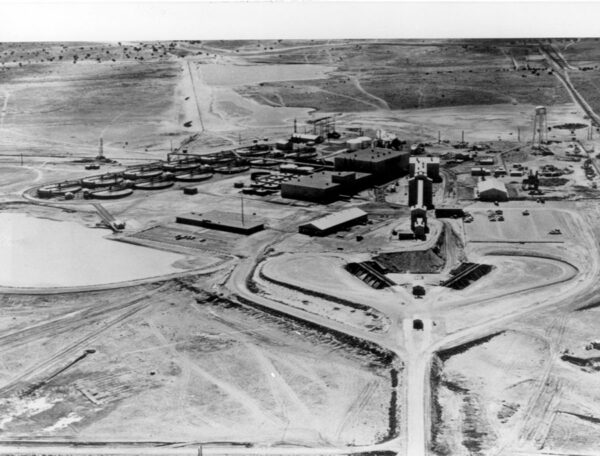Meet Phil

Humor in the Face of Danger: A Uranium Miner’s Unique Experience in the Mines
“It’s a miracle as many people survived as they did,” Phil said. “The first mine I worked at hauled a man out every week. It was a dangerous job.”
Around 1961, at just 20 years old, Phil began working in the uranium mining industry in Grants, New Mexico. Over the course of four years, he worked at three uranium mines in Arizona and New Mexico, progressing from a simple laborer to a skilled uranium miner.
While he truly enjoyed the work, Phil found that he loved the culture of the people more than anything. “Humor was something that kept us all going,” Phil recalled. “You couldn’t dwell on what you were doing or the danger we were in, we had to make jokes.”
One of Phil’s mining partners was nicknamed “Tiny”, in spite of the fact that he was 6’6” and weighed about 350 pounds. Phil recounted that Tiny’s wife was very particular and “neater than anything.” He laughed aloud as he reminisced, “I would catch mice underground and put them in Tiny’s lunch pail on the way home. And for two or three days after that, he wouldn’t get lunch!” This humorous comradery was vital in helping the miners get through the day and keep their minds off of the many occupational hazards.
Exposure to radon gas and smoke was common in the uranium mines, “it was smoke all the time.” Phil remembered, “ventilation was something they talked about, but no one ever saw it.” When Phil first started in the mines of New Mexico, he learned that “if the smoke was green you had to get out of the mine because there was no oxygen in it, but if it was blue it was safe because there was oxygen in it.” The high amounts of silica dust in the mines also contributed to a plethora of health issues for the miners. Phil recalled the mining town of Gold Hill, Nevada, where the average miner only lived for two years (after beginning work) due to silicosis.
One of Phil’s cousins, who was also a uranium miner, died of lung disease as a result of his workplace exposure. Phil realized that he too could have lung disease due to his exposure, but didn’t think he had worked at the mines long enough to contract anything. When he began to notice shortness of breath and other similar symptoms he was tested and diagnosed with lung disease. His DOL White Card covers costs associated with his approved diagnoses of Pneumoconiosis, Pulmonary Fibrosis, and other chronic manifestations due to radiation.
A few years ago, Nuclear Care Partners held a local informative event on the EEOICPA benefits available to former uranium miners. While he had already received his Department of Labor white card, Phil wasn’t aware that the card could cover additional services like in-home care. He attended the event and learned that he could receive benefits for his workplace exposure and consequential lung disease. Phil became a patient with Nuclear Care Partners and his wife, Barb, is now employed by the company as his family caregiver.
“Having my wife as my caregiver helps me do things that I couldn’t do otherwise,” Phil said. “The care team is wonderful and every single nurse I’ve had with Nuclear Care Partners has wound up being like family. In fact, my nurse’s husband is now one of my best friends. We even go fishing together.”
Phil expressed immense gratitude for his care team and shared that since he began care with Nuclear Care Partners in 2011, his nurses have been so vigilant and have, “saved my life.” Barb shared that on multiple occasions, his nurses have caught oncoming pneumonia and prevented it.
“I am so thankful for this care that has allowed me to have a high quality of life at home.”
To Read Phil’s Full Story, Check Out our Atomic Health News: Summer 2022 Edition!


